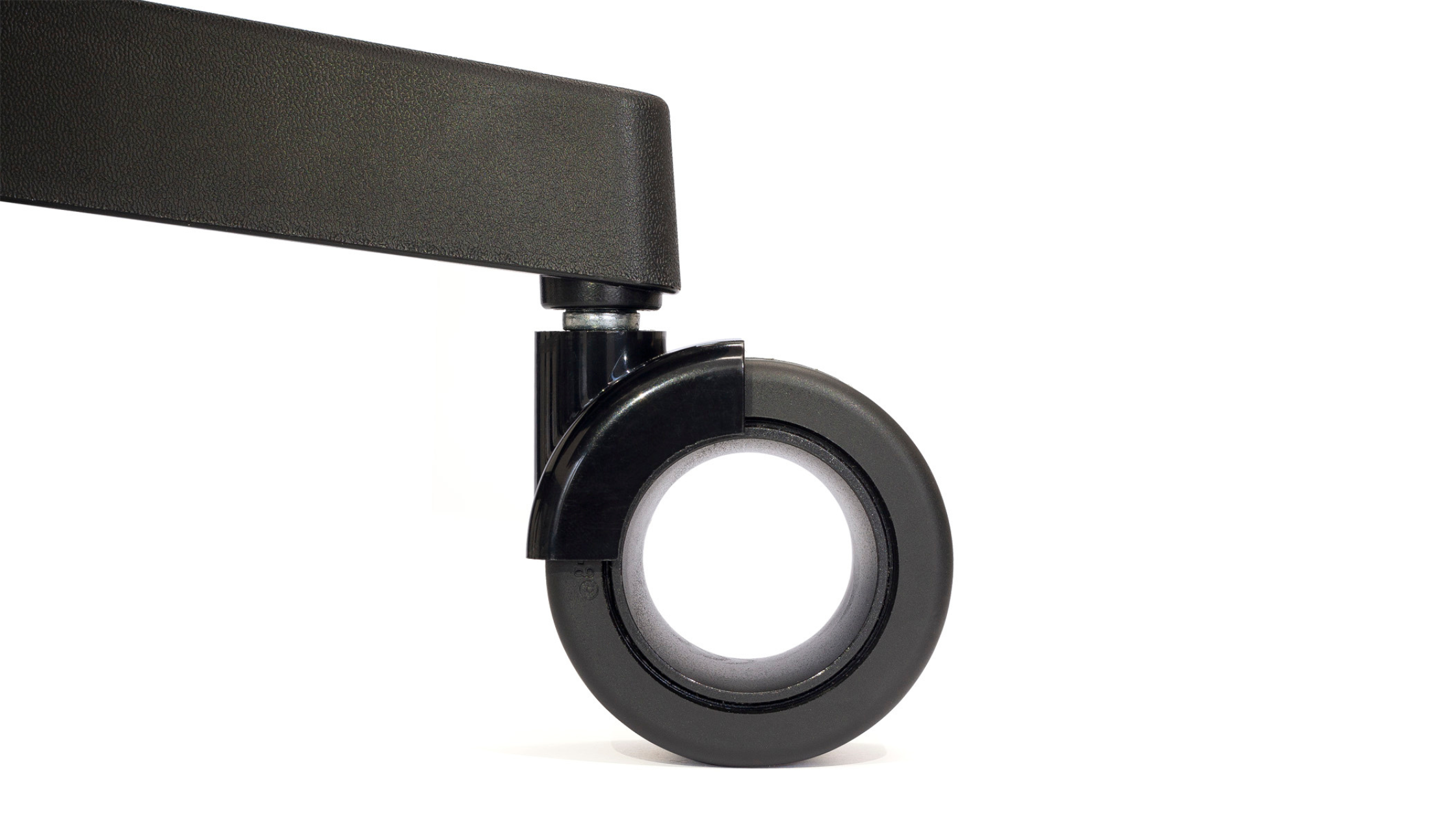What casters should I be using?
Choosing the correct casters is a major WHS risk factor in many workplaces.
The wrong casters in hospitals and customer service areas with hardwood or vinyl flooring can see staff injured. As you raise even slightly out of your seat, for just a second, a chair with regular casters can easily and silently roll backwards with the slightest bump, and when you go to sit again you can find yourself on the very front of the chair and tipping it and finding yourself injured on the floor.
Regular, free-wheeling casters are fine for carpeted floors but not for hard floors or vinyl.
So check with your Gregory chair expert:
Vinyl and Hard floors:
CAST10 soft tyred casters are for use on vinyl floors (most healthcare environments) and hard floors. These provide restrained friction to minimise any unintentional roll. Many chair companies make the mistake of fitting “locking” casters to 1 or 2 of the 5 wheels. This is poor safety practice: it does not stop a chair from pivoting out of the way by accident and it makes the chairs difficult to move around.
Carpeted floor:
Use regular or heavy-duty casters for easy movement. If a Chairmat is in use, be careful as this is then effectively a hard or vinyl floor and with those safety issues
Laboratories:
Code CAST08 for science and manufacturing consider “lock when seated” casters. These lock in place and can be useful for those who need a stationary position for delicate manufacture or science work. These release as you lift your weight, to pull the chair in or out and give you stability using a microscope or other instruments.
Lock when vacant:
Code CAST06 These soft tyred casters are most often used on Stool height seats to stop a stool from moving as you are trying to seat yourself. Once seated, they move freely so that you can pull yourself into the bench.
These can also be used in areas with vinyl or hard flooring on standard chairs but this required the chair to be deliberately moved back to be seated or stand easily, and in a multi-chair area like a counter or nurses station, this leaves this vacant chair in the road and difficult to navigate for other staff.
Special Sit-stand desk use casters:
For sit-stand desks, you should consider a multi-extension Gas lift so that you can more efficiently use the benefit of the desk height. On multi extension Gas lift chairs, you should consider either CAST10 restrained friction casters or CAST7 Lock when vacant casters can be more difficult to use on carpeted floors as it is harder to pull yourself to a sit-stand desk, which is likely to be less stable that a built-in service type counter where these are normally used on regular stools
Other caster options:
CAST02: super heavy duty > 160kg
CAST09: hard tyre brake when OFF chair (for drafting chairs on carpet only)(suggest still use CAST06)
CAST16: hard tyre Brake when ON chair (on Carpet only) (we do not see any sense in this one)



